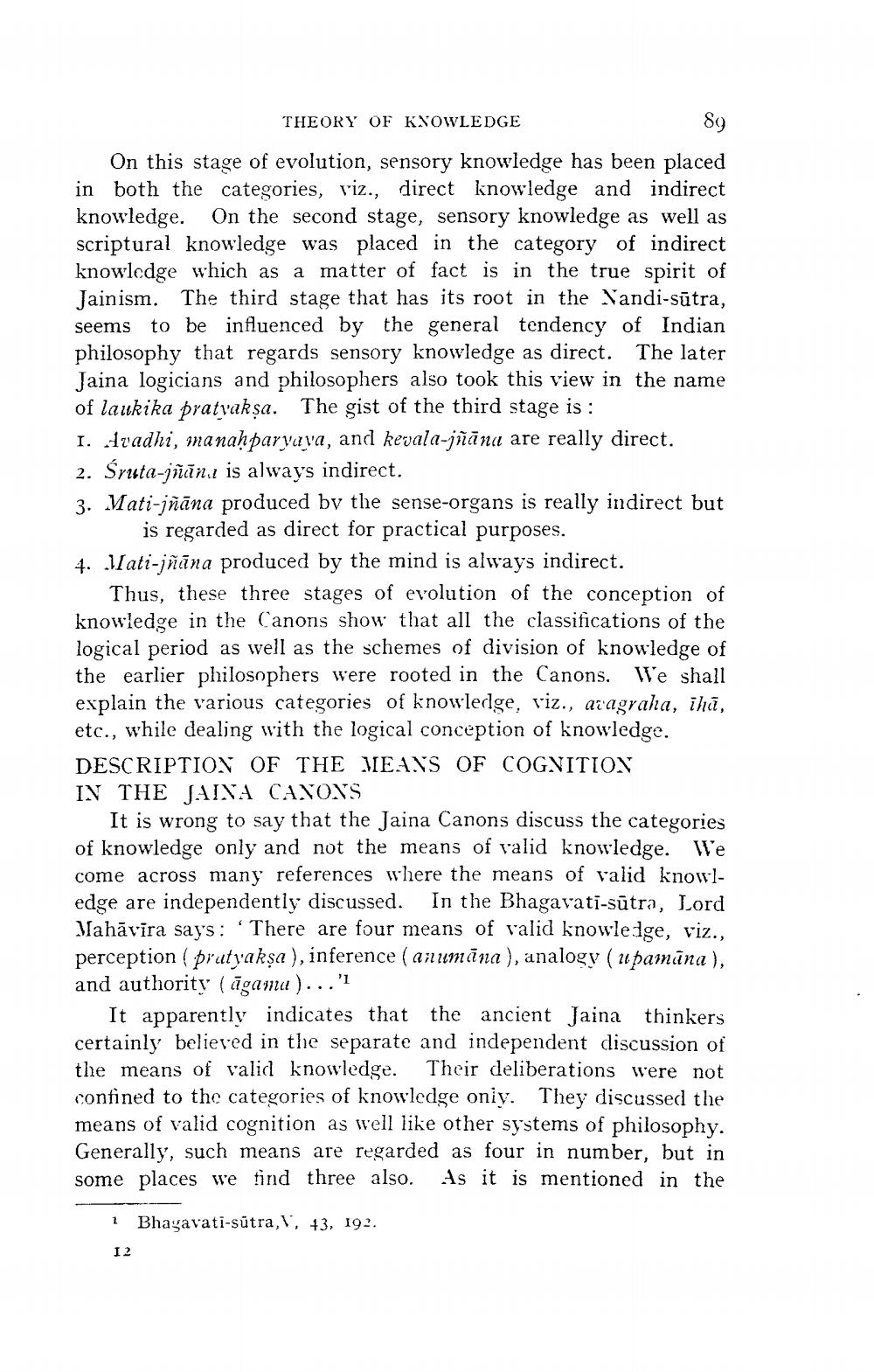________________
THEORY OF KNOWLEDGE
89
On this stage of evolution, sensory knowledge has been placed in both the categories, viz., direct knowledge and indirect knowledge. On the second stage, sensory knowledge as wel scriptural knowledge was placed in the category of indirect knowledge which as a matter of fact is in the true spirit of Jainism. The third stage that has its root in the Yandi-sūtra, seems to be influenced by the general tendency of Indian philosophy that regards sensory knowledge as direct. The later Jaina logicians and philosophers also took this view in the name of laukika pratvakşa. The gist of the third stage is : 1. Avadhi, manaḥparvava, and kevala-jñānu are really direct. 2. Śruta-jšiūn. is always indirect. 3. Mati-jñāna produced by the sense-organs is really indirect but
is regarded as direct for practical purposes. 4. Jati-jñāna produced by the mind is always indirect.
Thus, these three stages of evolution of the conception of knowledge in the Canons show that all the classifications of the logical period as well as the schemes of division of knowledge of the earlier philosophers were rooted in the Canons. We shall explain the various categories of knowledge, viz., aragraha, iha, etc., while dealing with the logical conception of knowledge. DESCRIPTION OF THE MEANS OF COGNITION IN THE JAINA CAVONS
It is wrong to say that the Jaina Canons discuss the categories of knowledge only and not the means of valid knowledge. We come across many references where the means of valid knowledge are independently discussed. In the Bhagavati-sūtra, Lord Mahāvira says: 'There are four means of valid knowledge, viz., perception (prutyaksa ), inference ( anumina), analogy ( 11 pamūna), and authority (āgamu)...'
It apparently indicates that the ancient Jaina thinkers certainly believed in the separate and independent discussion of the means of valid knowledge. Their deliberations were not confined to the categories of knowledge only. They discussed the means of valid cognition as well like other systems of philosophy. Generally, such means are regarded as four in number, but in some places we find three also. As it is mentioned in the
1 Bhagavati-sūtra,, 43, 192.
I 2




